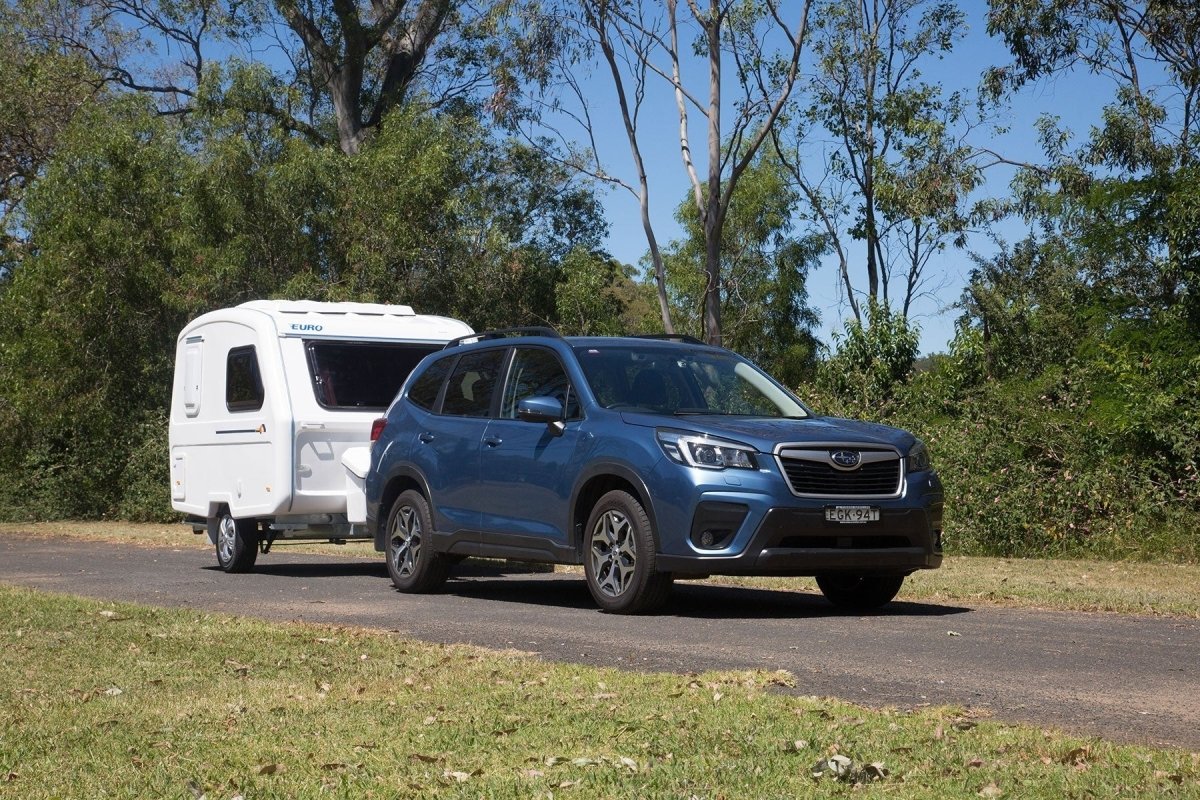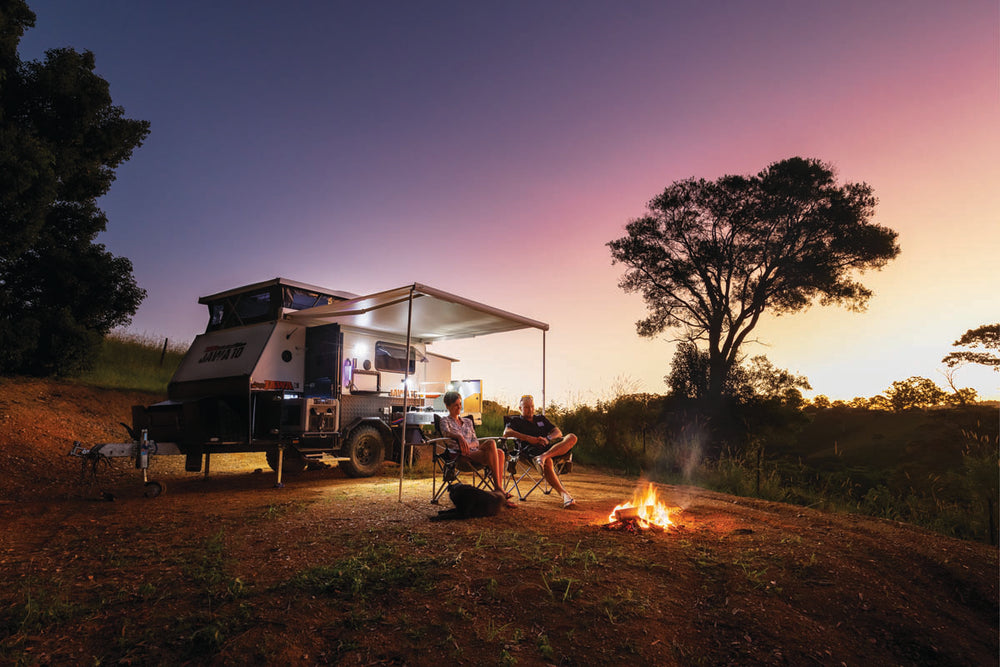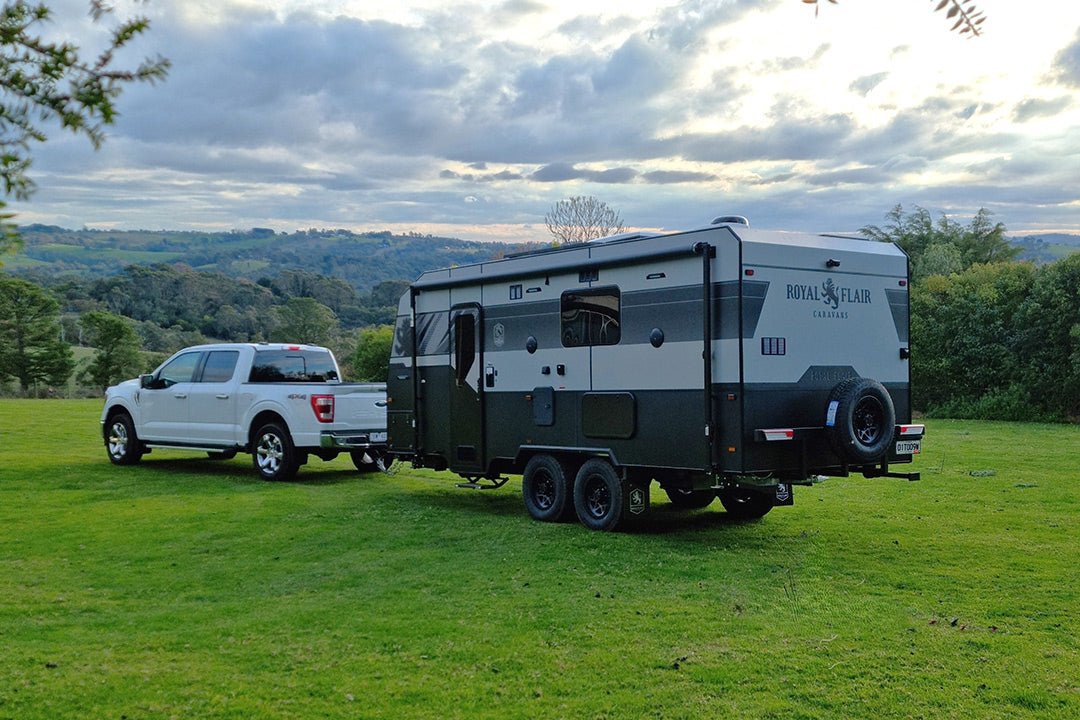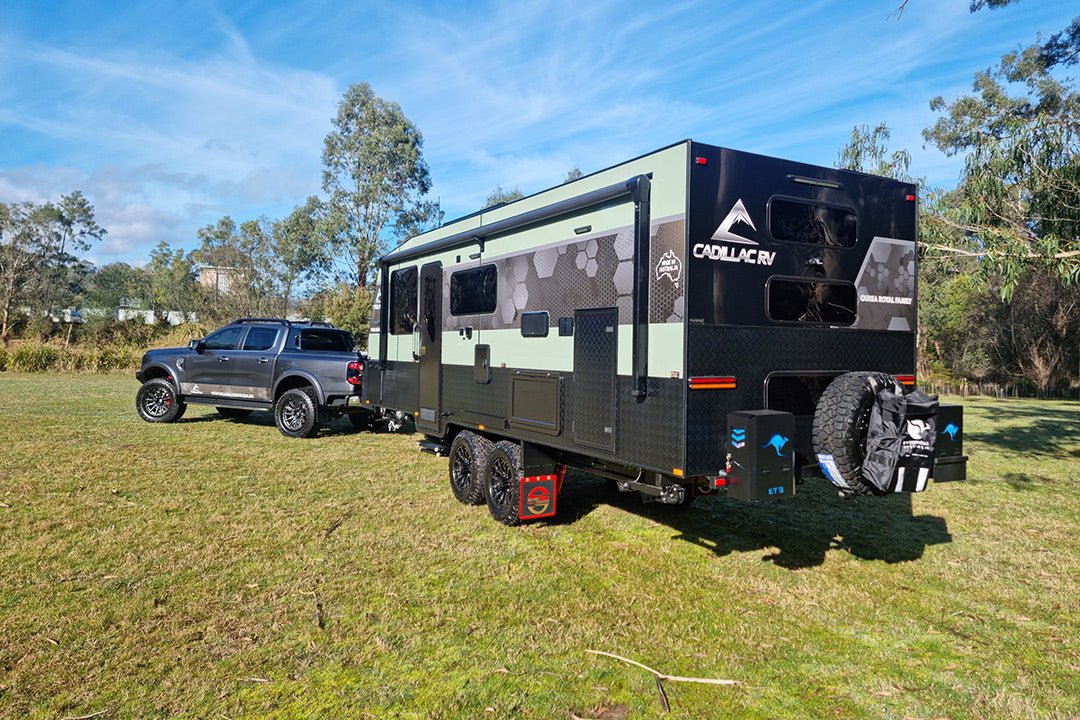Review: Euro Glider

In Australia, ‘small’ is a relative term for caravan lengths and weights. However, Sydney-based Euro Caravans imports a small range of caravans which indeed redefines the word. Almost all European-built caravans are lighter and more compact than the equivalent Australian models, but the Euro Caravans imports are almost in a category of their own.
Euro Caravans currently offers two designs, the Hobby with a towing length of just 4.5m (13ft 9in) and the Glider with a shorter towing length of 4m (13ft 2in). Polish built, it’s beneficial that the Niewiadow manufacturer’s name has been simplified for Australian use. All the caravans are designed to local specifications, including the electrical and gas compliance type matters. In the case of my review van, the Glider, is fully electrified and doesn’t have a gas system at all.
TOWING
What vehicle might be used for towing the Glider? Just about anything you care to name that has a tow hitch. Since the Glider has an overrun mechanical brake, not even an electric brake controller is required. Consequently, my around-town vehicle, a Subaru Forester with a maximum tow rating of 1500kg, was a good match for the Glider. Indeed, on the road, the Glider travelled along easily. Although, if lightly laden, then a bit of weight towards the front keeps things nice and stable. Anyone accustomed to manoeuvring larger vans around will find the shorter Glider a little twitchier when reversing. Gentle hand movements on the steering wheel are all that is necessary for a smooth backwards turn.
STATISTICS
Getting to a few vital features, the Glider has an external length of just 2.87m (9ft 5in), a width of 1.93m (6ft 4in) and a travel height of 2.26m (7ft 5in). Low bridges are certainly not a problem, and towing mirrors are not necessary. Given the narrow width of the van, there’s a clear view down both sides. With an ATM of 900kg and a Tare Mass of 620kg, the payload is just 280kg. Something quite adequate for a van this size. The lack of weight is why the van is easily pushed around with little trouble – something to keep in mind if van storage space is a bit tight. The Tow Ball Mass is relatively light too, somewhere between 30kg and 40kg, depending on how the van is loaded.
INTEGRATED BODY
A feature of the Glider body is that it’s frameless. The bodywork is made of foam-insulated polyester materials, aka fiberglass – something that makes it highly resistant to water leaks. The windows are typically double-glazed acrylic, and the door is moulded to match the body style. There are no external storage compartments but a moulded storage bin on the front drawbar is handy for the basics such as hoses and power leads.


If you feel like a bit of exercise, it’s relatively easy to lift the drawbar up in order to look at the chassis – it’s a reasonably low-riding caravan. AL-KO™ is the name stamped on the drawbar/chassis, ball coupling and torsion suspension, so it is all very familiar. The chassis is typical of European caravan design, reasonably minimal in structure with just main rails and the wheel axle. That being AL-KO™ IRS torsion and the ball coupling an AK270 with the overrun braking unit. Stabilisers are fitted to each corner of the caravan and there’s a spare wheel rack under the van at the rear.
Apart from a wall light, no other features are fitted to the nearside wall. The van shape and length preclude a conventional wind-out awning but there are two other alternatives. One is a simple awning that attaches to a sail track on the van and the other is an inflatable awning that gives a fair bit of living space.
Something that might surprise a few people is that this van is a pop-top. It’s not that obvious but the pop-top only rises a short distance and gives more headroom for taller people. A small folding step is a handy item, given the height of the van’s doorway.
MINIMALIST LAYOUT
Inside the Glider is quite a simple layout. It’s a two-berth arrangement with a dinette/bed across the front, a small kitchen across part of the rear wall, and a small bathroom in the offside back corner. Taking up the rest of the space adjacent to the entry door is a small wardrobe with shelf space and a small cabinet on the opposite side. It’s pretty impressive what’s been squeezed in. With the roof raised, the interior height is 1.83m (6ft) and with it down, it’s 1.67m (5ft 6in).
Laminated timber is very much the interior finish choice and despite that and the relatively confined interior, the van still has a reasonably light and airy feel.

DINING AND SLEEPING
Up front, the cafe style dinette will seat two people without a problem. I like the all-round windows, in a confined space, they do wonders for space perceptions, although the side windows don’t open. There aren’t the usual overhead lockers above the dinette but open shelving instead. Under the seat on the offside is a 240V power point and a dual USB charger outlet.
Setting up the 1.85m x 1.22m (6ft 1in x 4ft) bed is quickly done. A matter of lowering the table between the seats and filling the space with side cushions. Making up the bed requires a bit of fiddling around. Fitted sheets would be an asset. There is just one reading light, above the centre of the bed.

ELECTRICS AND WATER
Under the seats, with a bit of fiddling around with seat cushions and ply timber tops, the storage areas can be reached. On this particular van, both the 100Ah battery and the Truma TT2 five-litre 240V water heater are to be found under the offside seat. However, in future models, the battery will be shifted to the offside seat and a 35-litre water tank will be in its place. There’s no air conditioner fitted to the van, but an option offered by Euro Caravans is a portable Zero Breeze air conditioner.
Catering
As small kitchens go, this is typically European in size. There’s just a small stainless steel washing up basin and an under-bench LG Alpicool 58-litre fridge. Instead of a gas hob, a portable Westinghouse induction plate, rated from 300W to 1500W, does the job. A double cupboard sits beside the fridge and low-height overhead lockers are in the air space above.
BATHROOM COMPACTUS
The bathroom wins the “just how small can I get my bathroom” award”. There’s no room for swinging a cat but fitted in are a Thetford bench-style cassette toilet, fold-down wash basin, wall mirror and a shower unit. A sizeable opaque window can be used for ventilation. A little design challenge has been the roof height but that’s been worked around by having the raised pop-top partly above the bathroom area. I suspect that taller persons will still struggle with this arrangement. A better option might be a shower tent outside the van and use a flexible hose from inside the van.

NO GAS
Earlier models of the Glider had LP gas as standard. The team at Euro Caravans has decided not to do that, instead relying solely on electrics for cooking and water heating. While that’s fine in a caravan park, it’s more of a problem when remote travelling. Options offered to solve that issue are items like a Bluetti EB70 716WH portable power station and a 120W solar panel for charging that and the house battery. I didn’t have the opportunity to test this out at the time, but it’s certainly worth a thought. Although there’s weight saving in not having a gas system, the alternative does add weight. The Bluetti EB70 for instance, weighs 9.7kg.
THE BOTTOM LINE
This is quite an impressive little van, primarily for what is squeezed into the layout. It’s more a caravan park van than a remote stayer. For those with environmental concerns, the Glider has a very light footprint. Sure, it’s not for everyone, particularly those with long-term travel plans and who like a bit of interior room. However, for keen travellers who enjoy the outdoors lifestyle but have a limited van storage space, a limited budget, or a small tow vehicle, it’s a whole lot better than the flapping canvas of a tent or the back of an SUV.
HITS AND MISSES
Hits
- Any number of tow vehicles can be used
- Small space thinking in the design
- Ideal for lightweight travellers
- Budget price
Misses
- Front side windows don’t open
- Lightweight timber fittings need to be treated with care
- Limited capacity water tank and water heater
- Options add extra weight
EURO GLIDER RATINGS
VALUE FOR MONEY
Great for travellers on a budget
TOWABILITY
Small tow vehicle only required, therefore an extensive choice on makes and models
SUITABILITY FOR INTENDED TOURING
Light weight travel definitely
BUILD QUALITY
Mostly well put together, although some of the timber fittings felt a bit flimsy
LIVEABILITY
For those who are happy living in more confined spaces yet with all the basics
SELF SUFFICIENCY
Limited to the battery and water tank (35-litre) capacity
CUSTOMER CARE
There’s a 12-month warranty on the van but that can be extended to three or five years
INNOVATION
European design thinking, big things in small spaces
X-FACTOR
Caravan size and weight, or rather lack thereof
EURO GLIDER SPECS
WEIGHTS AND MEASURES
| Body length | 2.87m (9ft 5in) |
| Overall length | 4m (13ft 2in) |
| Width | 1.93m (6ft 4in) |
| Height | 2.26m (7ft 5in) |
| Tare | 620kg |
| ATM | 900kg |
| Payload | 280kg |
| Ball weight | 40kg |
EXTERNAL
| Frame | N/A |
| Cladding | Moulded fibreglass |
| Chassis | Hot dipped galvanised |
| Suspension | AL-KO™ IRS |
| Coupling | AL-KO™ 251S Delta Braked Overrun |
| Brakes | AL-KO™ IRS torsion |
| Wheels | 14in |
| Water | 1 x 35L |
| Battery | 1 x 100Ah |
| Solar | Opt – 120W solar blanket |
| Air-conditioner | Opt – portable Zero Breeze |
| Gas | No |
| Sway control | No |
INTERNAL
| Cooking | Westinghouse Induction 240V |
| Fridge | LG Aldicool AD65 58L12V compressor |
| Bathroom | Thetford bench cassette |
| Hot water | Truma TT2 5L 240V |
Euro Glider price as shown $36,800
THE NEXT STEP
If you need help choosing your first caravan or are considering upgrading your existing one, check out the caravans available on TradeRVs today.
The sellers will be happy to help and answer any inquiries you may have about the products advertised for sale.
RELATED ARTICLES:
EuroCaravans NR Freedom Review
Should you choose a lightweight caravan?







